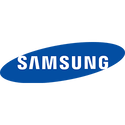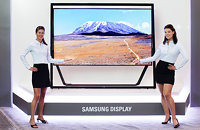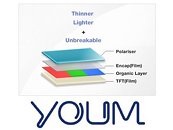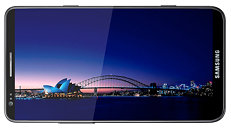
Samsung Display Showcasing State-of-the-Art Mobile to Extra-Large-Sized Displays
Samsung Display announced today that it is showcasing several industry-leading technologies and mobile to extra-large-sized display prototypes at the Society for Information Display's Display Week 2013, May 21-23, 2013, in the Vancouver Convention Centre (Booth 700). These include a Full HD (1920x1080) mobile AMOLED display with the world's broadest color gamut, and an 85-inch Ultra HD (3840×2160) LCD TV panel with extremely vivid color and low power consumption.
In addition, Samsung Display shows a unique new Diamond Pixel technology being highlighted at the show, and a featured LCD technology that enables local-dimming control in direct LED-based LCD panels. The world's first mass-produced 4.99-inch Full HD mobile AMOLED display offers the world's broadest color gamut with a 94 percent average rate of reproduction for the Adobe RGB color space. The Adobe RGB standard is about 30 percent broader than general sRGB standards.
In addition, Samsung Display shows a unique new Diamond Pixel technology being highlighted at the show, and a featured LCD technology that enables local-dimming control in direct LED-based LCD panels. The world's first mass-produced 4.99-inch Full HD mobile AMOLED display offers the world's broadest color gamut with a 94 percent average rate of reproduction for the Adobe RGB color space. The Adobe RGB standard is about 30 percent broader than general sRGB standards.




